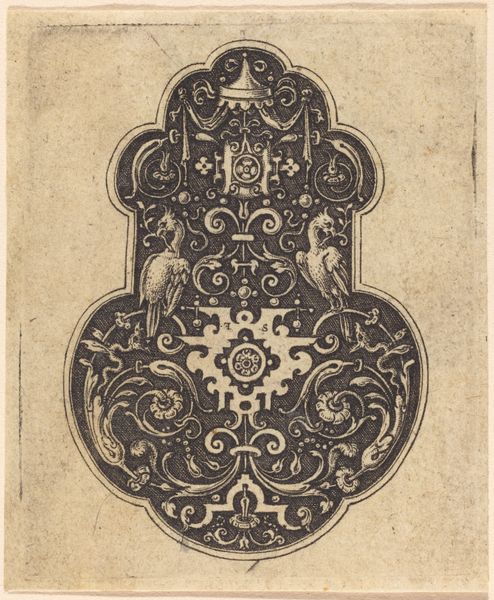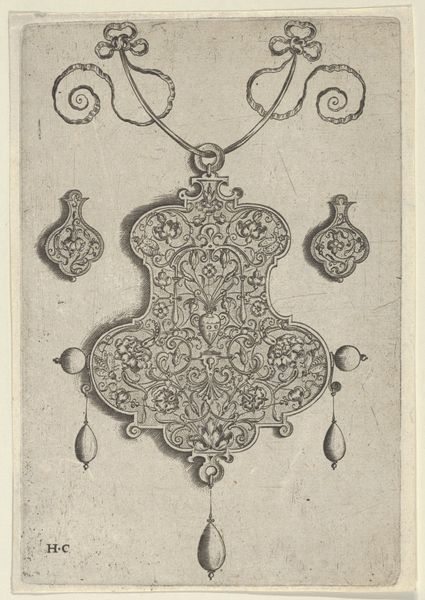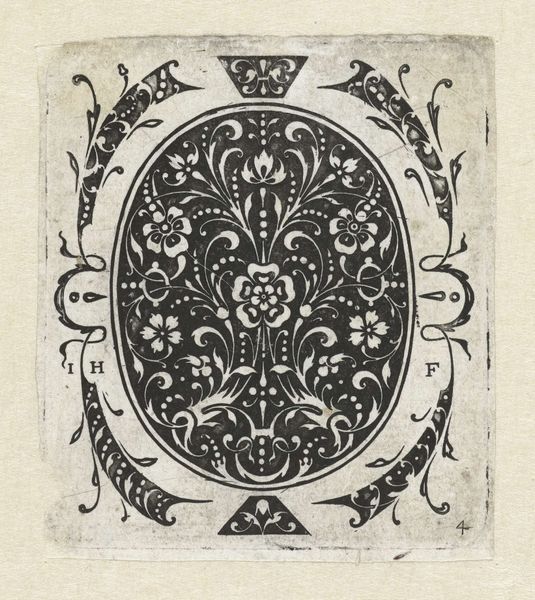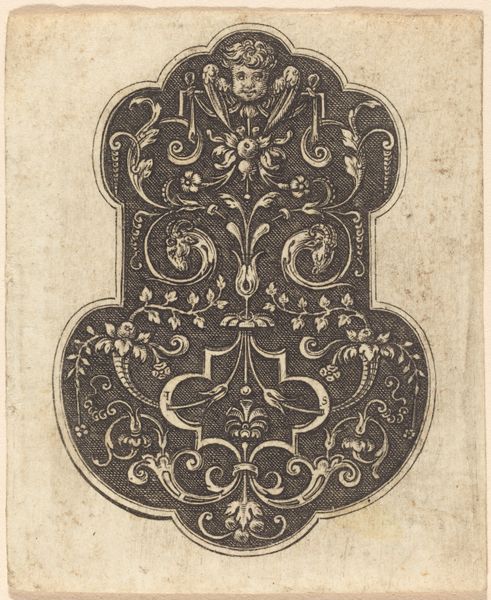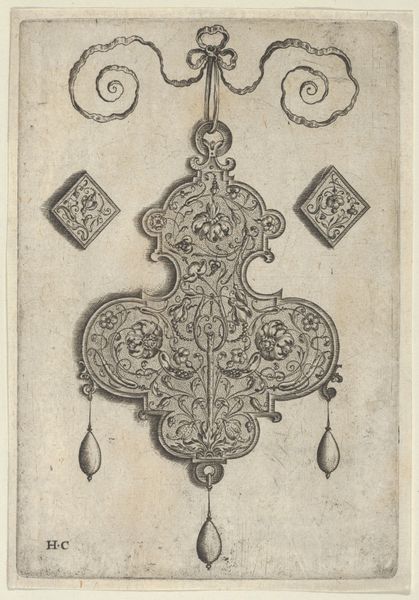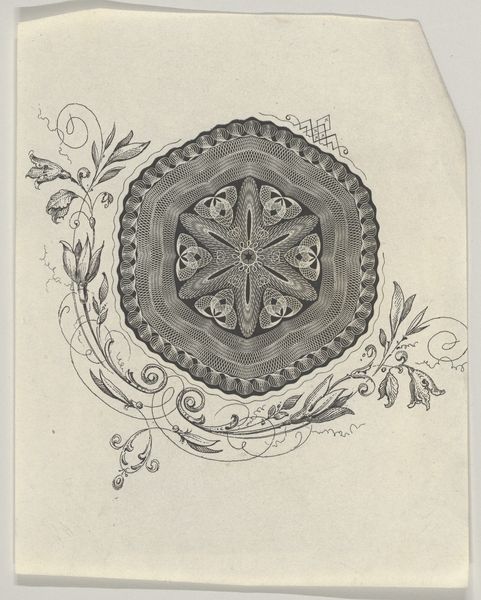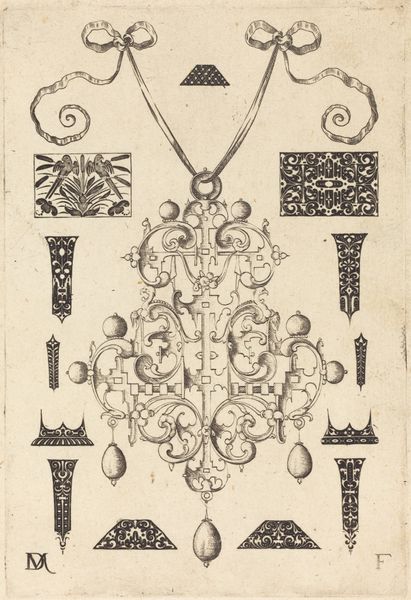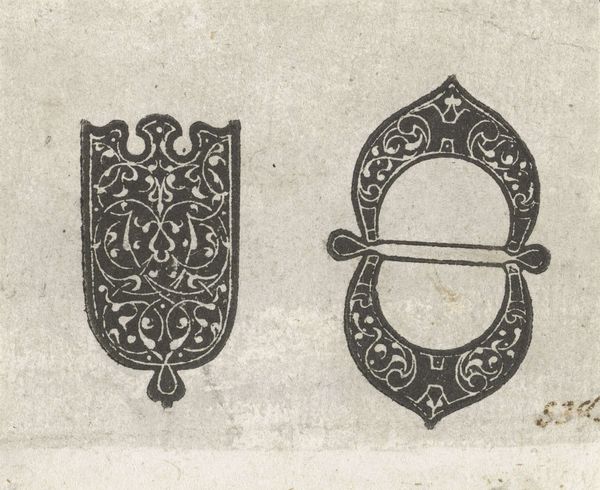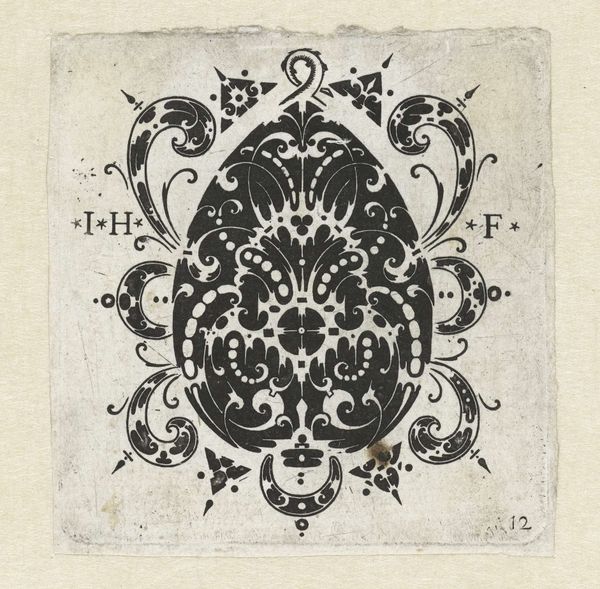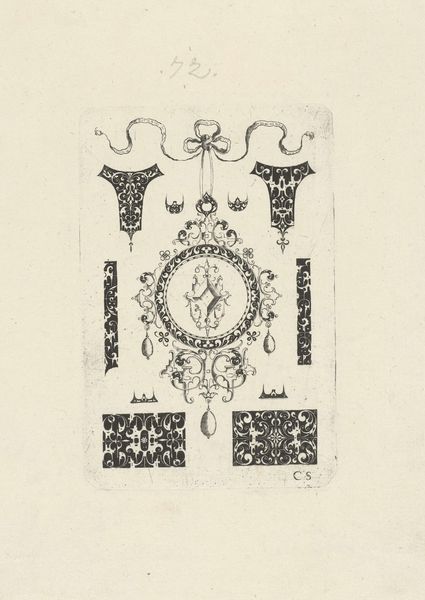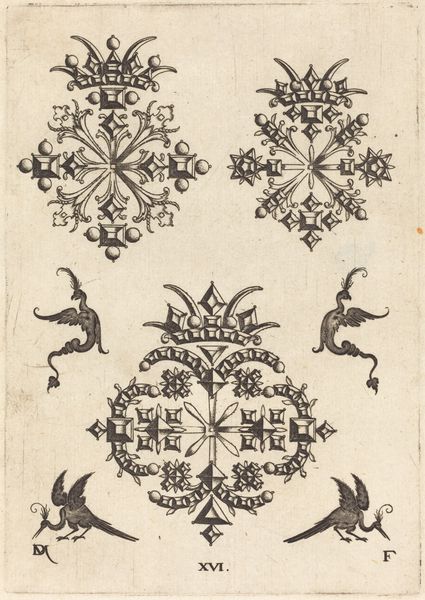
Bladranken rondom een cartouche van wit rolwerk met een zwarte decoratie in het midden 1528 - 1573
0:00
0:00
drawing, graphic-art, print, engraving
#
drawing
#
graphic-art
# print
#
old engraving style
#
form
#
11_renaissance
#
line
#
northern-renaissance
#
decorative-art
#
engraving
Dimensions: height 57 mm, width 30 mm, width 40 mm
Copyright: Rijks Museum: Open Domain
Curator: This intricate engraving, titled "Bladranken rondom een cartouche van wit rolwerk met een zwarte decoratie in het midden," was crafted between 1528 and 1573, likely for decorative purposes. The artist, Etienne Delaune, captures a specific aesthetic of the Northern Renaissance. Editor: It has such an imposing presence, doesn't it? There is an air of seriousness and order, which I see mirrored in the strict bilateral symmetry and rigid lines. It feels monumental, even if its physical scale is actually rather small. Curator: Scale is a key factor in accessing the impact of works of this period. Prints like this would have been reproduced and circulated as examples of excellent ornamental design to craftsmen and artisans of the period. The impact of pieces like this lies in the ways it has reproduced a rigid ideology and aesthetic hierarchy. Editor: Indeed! The recurring motifs of acanthus leaves, paired birds, and centralized emblems have long served as shorthand for prosperity, balance, and a certain cultivated refinement. Think about tapestries, or furniture making... even heraldry. Curator: Precisely! In order to analyze the symbolism adequately, one has to contextualize gendered and political forces behind displays of affluence. I see this work as less about “pure” artistry and more about visual articulations of power at play during that time period. Editor: And what’s interesting here is how those traditional symbols have evolved and been reinterpreted over the centuries. While they originally might have signaled power, viewing it through our contemporary lens, we now decode this almost anachronistic impulse in design history, its visual language having outlived its explicit purpose. Curator: Yes, these relics also serve as an entry point to trace shifting dynamics in decorative practices, which inevitably involve the changing identities of the artist. To contextualize the piece with these issues allows the design's complex layers to emerge. Editor: Ultimately, seeing those layers, of both overt symbols and subtle undercurrents, deepens the work and its lasting influence across creative domains. Thank you! Curator: Thank you for your time. It allows us to expand art history as it has come to be understood and consider more inclusive possibilities.
Comments
No comments
Be the first to comment and join the conversation on the ultimate creative platform.
